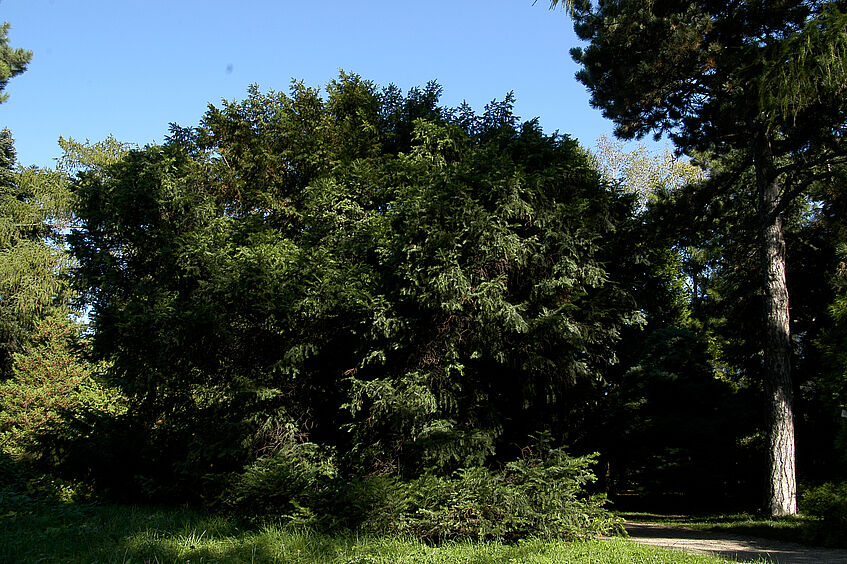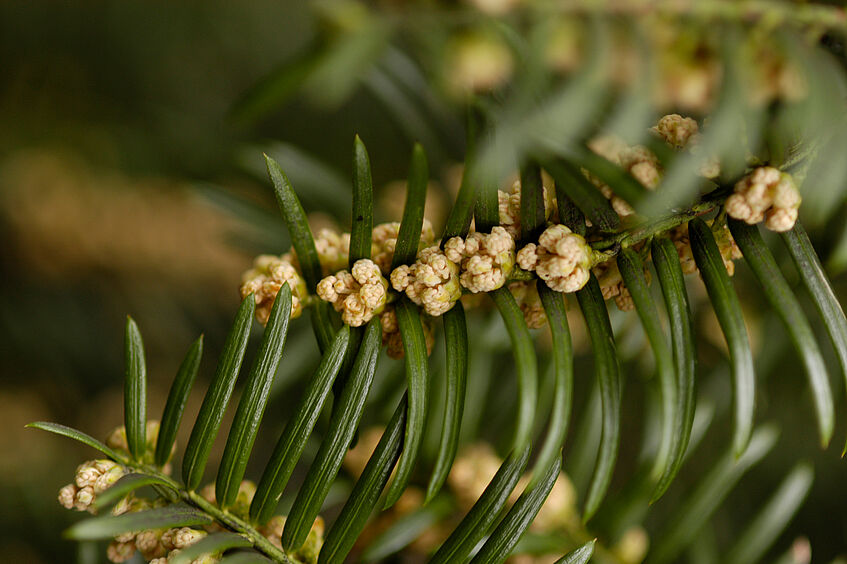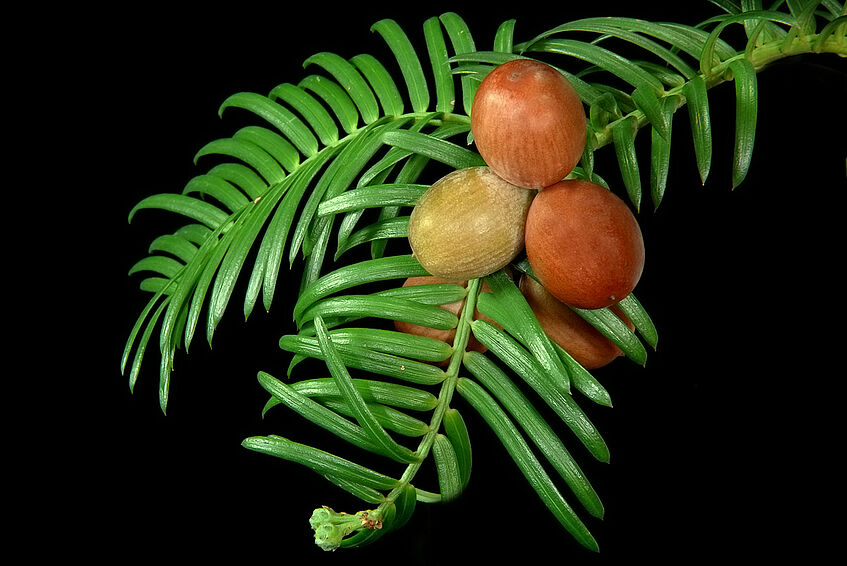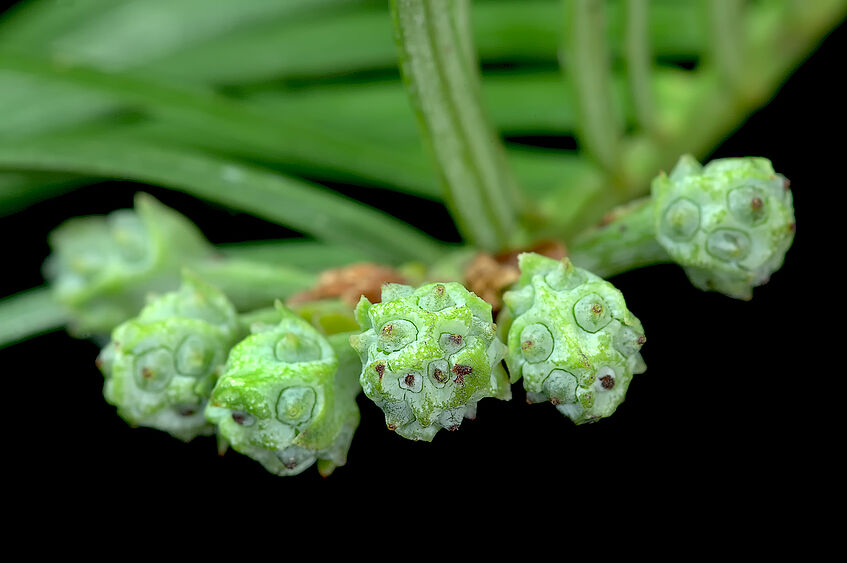Cephalotaxus harringtonia – Japanese or Harrington plum yew

Cephalotaxus harringtonia © BGUW_R. Hromniak

Cephalotaxus harringtonia © BGUW_R. Hromniak

Cephalotaxus harringtonia © BGUW_R. Hromniak

Cephalotaxus harringtonia © BGUW_R. Hromniak
Location in the garden: area 28
The genus Cephalotaxus consists of 4?9 accepted species (depending on the species-concepts of different experts) from the Himalayas and East Asia. Only two of the species are reasonably hardy in our climate. Besides the Japanese plum yew (C. harringtonia) that is cultivated in the Botanical Garden of the University of Vienna, the other hardy species is C. fortunei from China. Cephalotaxus harringtonia is native to deciduous broad-leafed forests in Japan and Korea at an elevation of 600-1,000 m. There, it grows in the understory and tolerates a lot of shade, even being sensitive to too much sun. In its natural environment it is endangered by overexploitation. Its constituents, the so-called cephalotaxine and harringtonine alkaloids, play a role in tumor therapy.
Cephalotaxus harringtonia was the first species of the genus described by western plant collectors. It was introduced to Belgium by Siebold in 1829 and remains the most frequently cultivated species because of its complete hardiness in winegrowing climate zones. It is named after the Earl of Harrington in England, who was one of the first to plant it after its importation to Europe by Siebold. The genus name derives from greek kephale (head) and the tree Taxus (yew). The "head-like" parts of the Cephalotaxus plant are the male flowers. They sit as head shaped spheres in the leaf axils of this small, dioecious tree ("dioecious" means there are separate male and female plants). The similarity to our native European yew (Taxus baccata) can be clearly seen in the Botanical Garden of the University of Vienna, where both plants grow in area 28.
Cephalotaxus harringtonia is an evergreen shrub or small tree. The conspicuous blue to gray-white striations on the undersides of the needles are clear distinctive features in comparison to the European yew. The seeds of the plum yew are reminiscent of olives in size and shape; they grow to 2-3 cm long, up to 1.5 cm wide, and ripen in October. The original green colour changes to purple with increasing maturity. By contrast, our native yew produces seeds of up to only 1 cm with a shiny red, fleshy outer layer (attracting birds to disperse them). All parts of the European yew except for this red outer seed part are highly poisonous. The plum yew is not poisonous.
The Japanese plum yew is a valuable ornamental, but usually just for enthusiastic gardeners, because it is only semi-hardy outside the winegrowing zone. In the Botanical Garden of the University of Vienna parasites are regularly observed on the undersides of the needles (presumably gall lice). However the plant does not seem to lose vitality from this attack.
